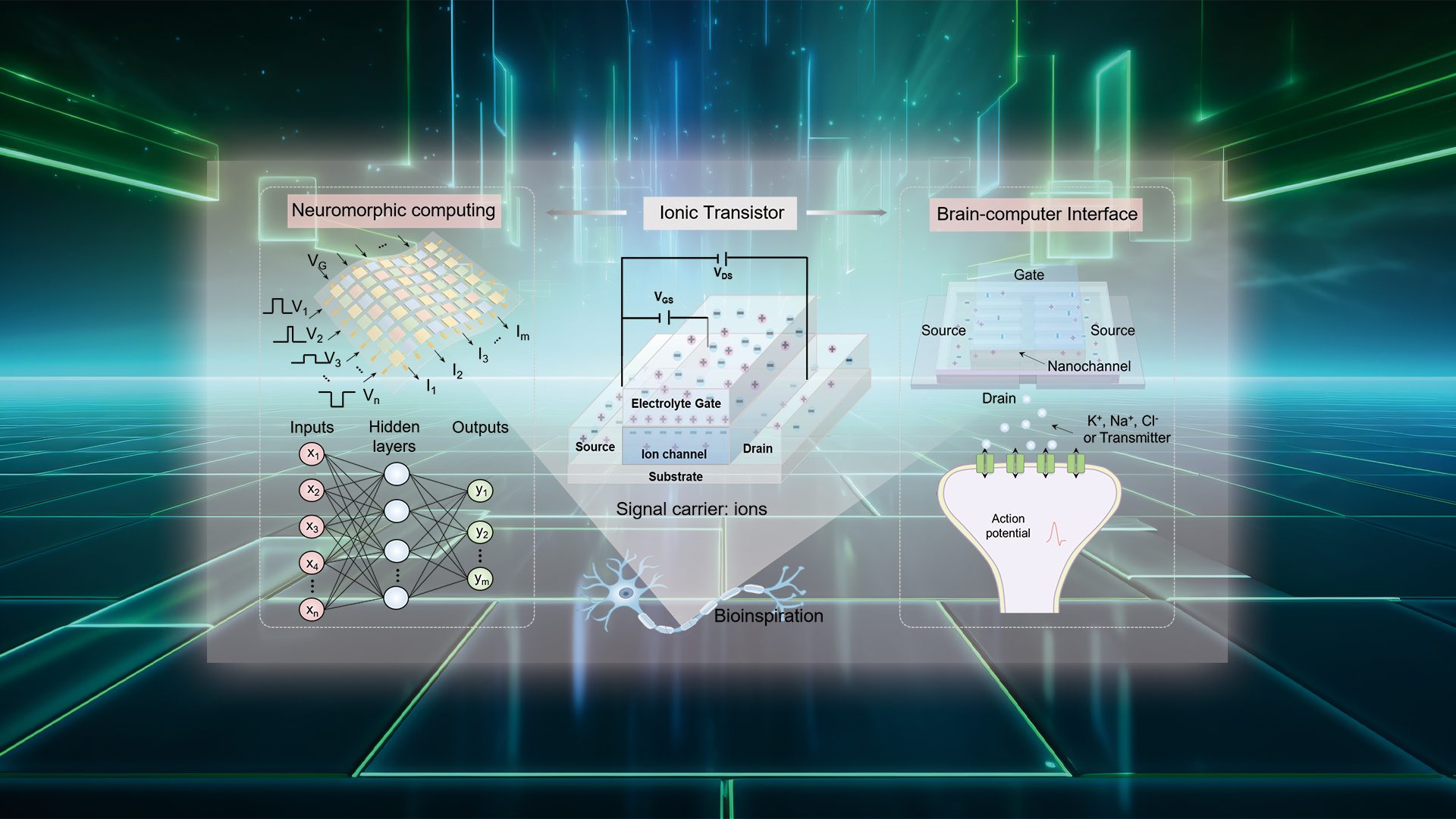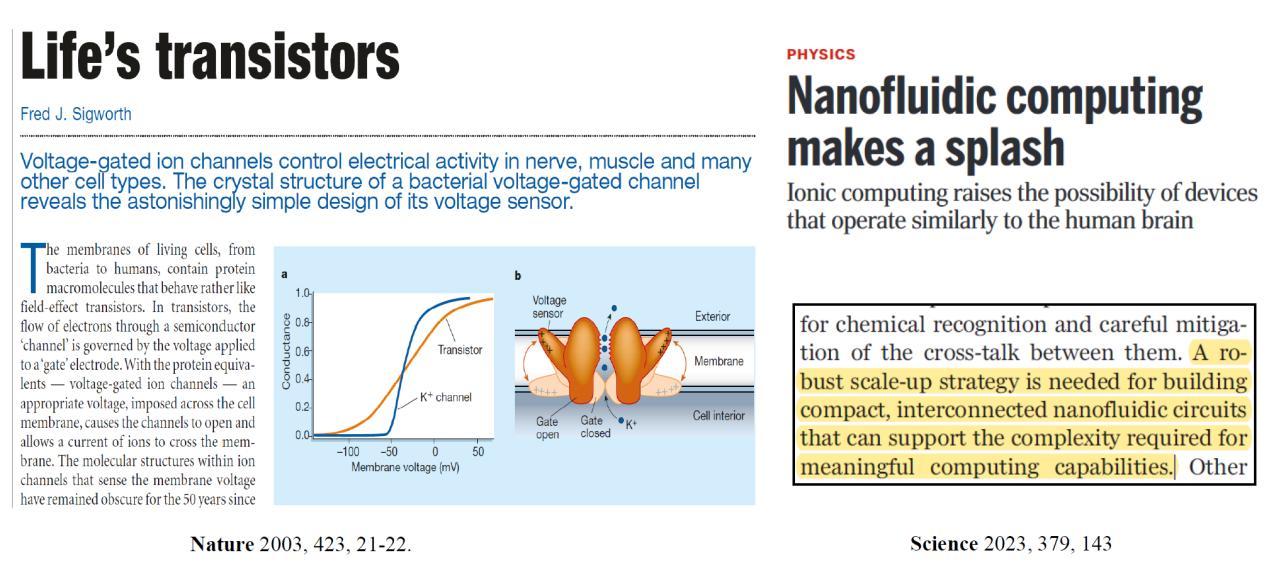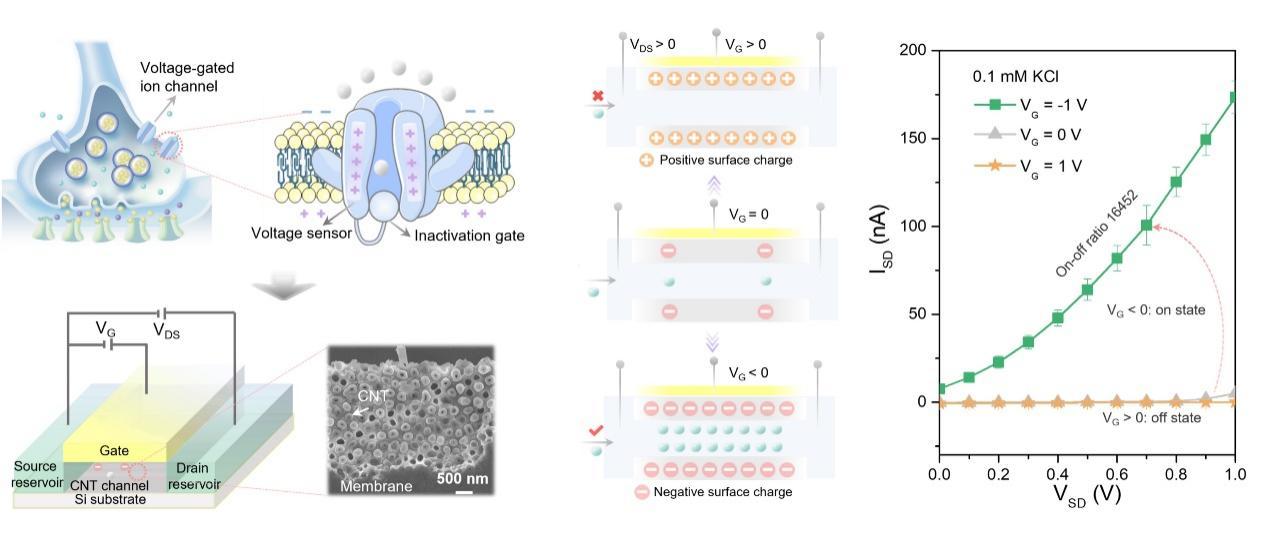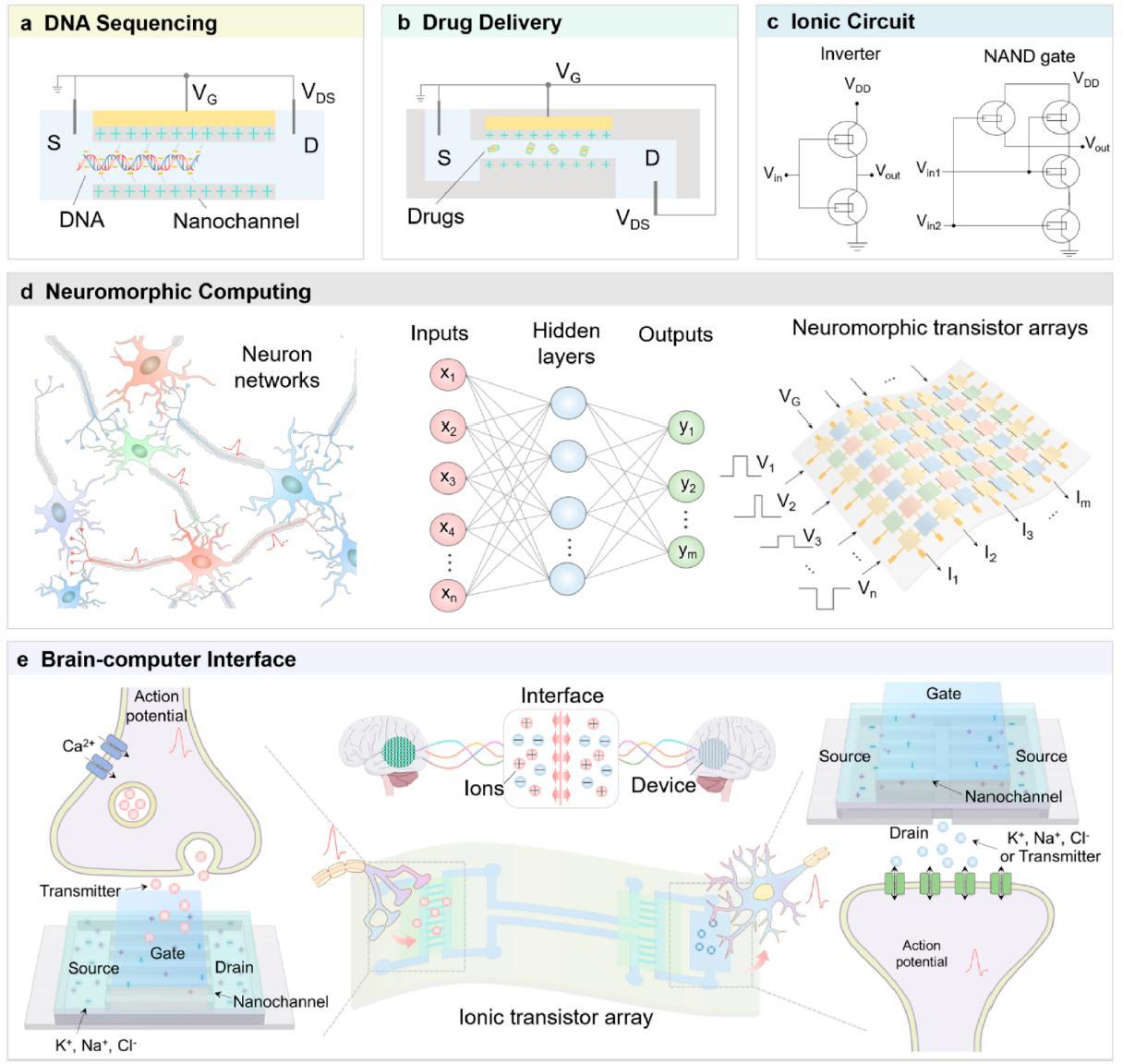The biggest difference between electronic devices and brain information processing mechanisms is that the human brain is an intelligent system that uses ions as information carriers with ultra-low energy consumption and ultra-high performance. Voltage-gated ion channels, also known as life’s transistors (Figure 1), can precisely and selectively regulate ion transport and play important roles in maintaining important physiological activities and processing complex information in intelligent life.

Associate Professor Kai Xiao’s research group from the Department of Biomedical Engineering (BME) at the Southern University of Science and Technology (SUSTech) has published their research on ion transistors based on ions as information carriers. Inspired by the switching mechanism of voltage-gated ion channels (i.e., life’s transistors), they successfully prepared ionic transistors based on carbon nanotubes, which can achieve ultra-high switching ratios (104) at ultra-low gate voltages. In addition, logic gates were constructed based on ionic transistors, demonstrating their application and development in ion circuits.
Their work, entitled “Bioinspired carbon nanotubes-based nanofluidic ionic transistor with ultrahigh switching capabilities for logic circuits”, has been published in the journal Science Advances.

Figure 1. Life’s transistors and how to construct ionic transistors through nanofluidic systems
The research group reported a nanofluidic ionic transistor based on carbon nanotubes, which exhibits an on/off ratio of 104 at an operational gate voltage as low as 1 V (Figure 2). By controlling the morphology of carbon nanotubes, both unipolar and ambipolar ionic transistors are realized, and their on/off ratio can be further improved by introducing an Al2O3 dielectric layer. Meanwhile, this ionic transistor enables polarity switching between p-type and n-type by controlled surface properties of carbon nanotubes. The implementation of constructing ionic circuits based on ionic transistors is demonstrated, which enables the creation of NOT, NAND, and NOR logic gates.

Figure 2. Bioinspired design and switching state of nanofluidic ion transistor
The researchers provide a comprehensive overview of the first generation of bioinspired ionic transistors, including their operating mechanisms, device architecture development, and property characterizations. Despite its infancy, significant progress has been made in the applications of ionic transistors in fields such as DNA detection, drug delivery, and ionic circuits. Challenges and prospects of full exploitation of ionic transistors for a broad spectrum of practical applications are also discussed (Figure 3).
Nature has chosen ions as the information carrier for the human brain, and the close coordination of various ion channels on nerve cells has formed the advantage of fast computing and low energy consumption in the human brain. Inspired by nature, ion information devices, compared to electronic devices, are still in their early stages and have shown enormous application prospects. They expect ion transistors to play important roles in the near future in the concentration or separation of ions and molecules in seawater and physiological disease detection in clinical medicine. Additionally, nanofluidic systems can aim to mimic the energy-efficient information processing of the human brain (such as various pulse signals based on action potentials, biological oscillations, long-term and short-term memory, etc.). This provides significant advantages for implantable nanofluidic devices and barrier-free brain-computer interfaces.

Figure 3. Application and outlook diagram of ionic transistor
Exploring artificial devices that precisely control ion transport will promote the development of ultra-low-energy information technology based on ion systems, and have broad application prospects for ion sensing, low-energy neuromorphic computing, and brain-machine interfacing.
The research group has also made a series of progress in the construction of ion information devices, which have been published in top journals, including Angewandte Chemie International Edition, Device, and ACS Nano.
Wenchao Liu, a doctoral student from the Department of BME at SUSTech, is the first author of the paper. Research Assistant Tingting Mei from the Department of BME at SUSTech and Zhouwen Cao from the National Center for Nanoscience and Technology (NCNST) at the University of Chinese Academy of Sciences (UCAS) are the co-first authors. Associate Professor Kai Xiao is the corresponding author, while Associate Researcher Ruotian Chen from the Dalian Institute of Chemical Physics at UCAS and Associate Researcher Bin Tu from NCNST, UCAS are the co-corresponding authors.
SUSTech is the first affiliated unit of the paper, with collaborative units including the Technical Institute of Physics and Chemistry at UCAS, along with the Department of Mechanics & Aerospace Engineering and the Department of Materials Science & Engineering at SUSTech.
This work was supported by the National Key Technologies R&D Program of China, National Natural Science Foundation of China (NSFC), Shenzhen Science and Technology Innovation Committee, Shenzhen Science and Technology Program, Guangdong Provincial Key Laboratory of Advanced Biomaterials, Starting Grant from SUSTech, and the Strategic Priority Research Program of the Chinese Academy of Sciences.
Paper link published in Science Advance: https://www.science.org/doi/10.1126/sciadv.adj7867
Related links:
Angewandte Chemie International Edition: https://doi.org/10.1002/anie.202401477
Device: https://www.sciencedirect.com/science/article/pii/S2666998624000565